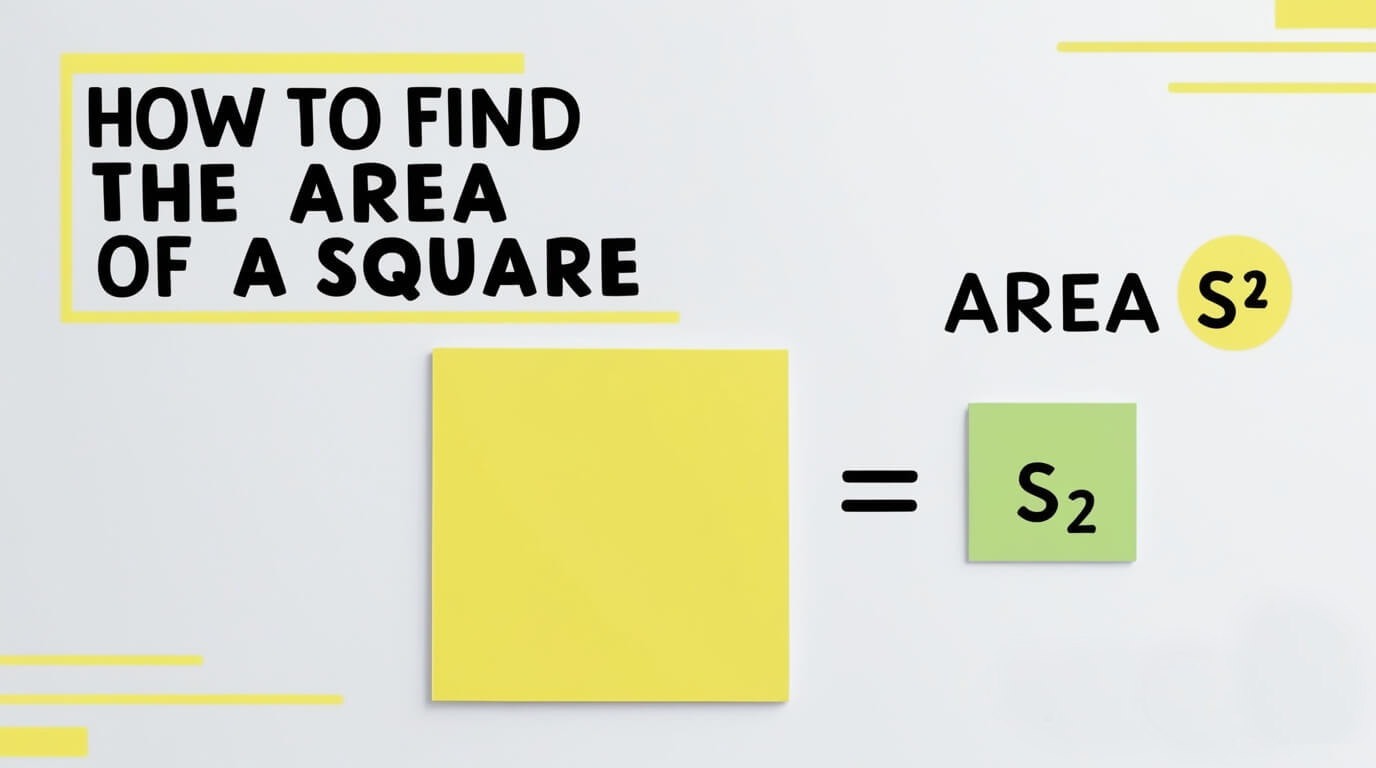
Squares are very simple shapes. They have four equal sides and four right angles formed where those sides come together and forms a two-dimensional shape. There is no doubt in finding any missing angles in a square because all four are alwaysgoing to be 90 degrees. There is no need for complicated equations for finding the lengths of unlabeled sides; half your job is done if you know one of the sides.
Area is the amount of space inside a shape or object. It tells us how much space a shape covers. When we measure the area of a square, we only need to know the length of one side because all sides of a square are equal. The area of a square is found by multiplying the length of its side by itself.

We can also find the area of other shapes like rectangles, parallelograms, triangles, or any polygon by using their side lengths. For curved surfaces, like a circle, the area is calculated based on the radius, which is the distance from the center of the circle to its outer edge.
When you're calculating the area of a square, you're figuring out how much space its surface covers. It's like finding out how many square units fit inside the whole square. The formula to determine the area of a square is A = s², or A = side x side. Here's an example to help you understand.

Here, your sides each measure 10, so you’d find the area like this:
A = s2
A = 102
A = 10 x 10
A = 100
Since all four angles in a square are 90 degrees, a square is also considered a rectangle. Because its opposite sides are parallel, a square is also a parallelogram. And since all sides of a square are the same length, it’s also a rhombus. While not all parallelograms, rectangles, or rhombuses are squares, every square fits into all of these categories.
Keeping that in mind, you can also use other formulas for figuring out the area of a square. We will begin by finding the area of a rectangle (A = l x w) using 16 as the measurement of our sides.
A = l x w
A = 16 x 16
A = 256
When calculating the area of a parallelogram, you use the formula A = b x h, where "b" stands for the base and "h" stands for the height. In a parallelogram, even though the opposite sides are parallel, the angles between them aren’t always 90 degrees. Because of this, to find the height, you need to draw a line from one corner of the shape straight down to the base, forming a 90-degree angle.
However, when you’re working with a square, you don’t need to draw this line separately because the angles between the sides are already 90 degrees. This means the height and base are the same as the sides of the square. If both the height and base are 39.43 units, you can use them directly in the formula to find the area.
For each square, simply multiply the side lengths by itself or square the side lengths to find each of their areas. Here’s a table that summarizes the calculation for you.

Here some of the unit conversion lists are provided for reference. Some conversions of units:
The area of a square is measured in square units
The perimeter of a square is the total of all four sides of a square, whereas the area of a square is the region or space that a square occupies in two dimensions.
The area of a square can be calculated using the formula side × side square units.
A square is a 2D shape where all four sides are the same length. Because the sides are equal, to find the area, you multiply the length of one side by itself. So, the area of a square is side × side, which is the same as saying side squared.
As we know, a square is a two-dimensional figure with four sides. It is also known as a quadrilateral. The area of a square is defined as the total number of unit squares in the shape of a square. In other words, it is defined as the space occupied by the square.
© Knowledgeum Academy
